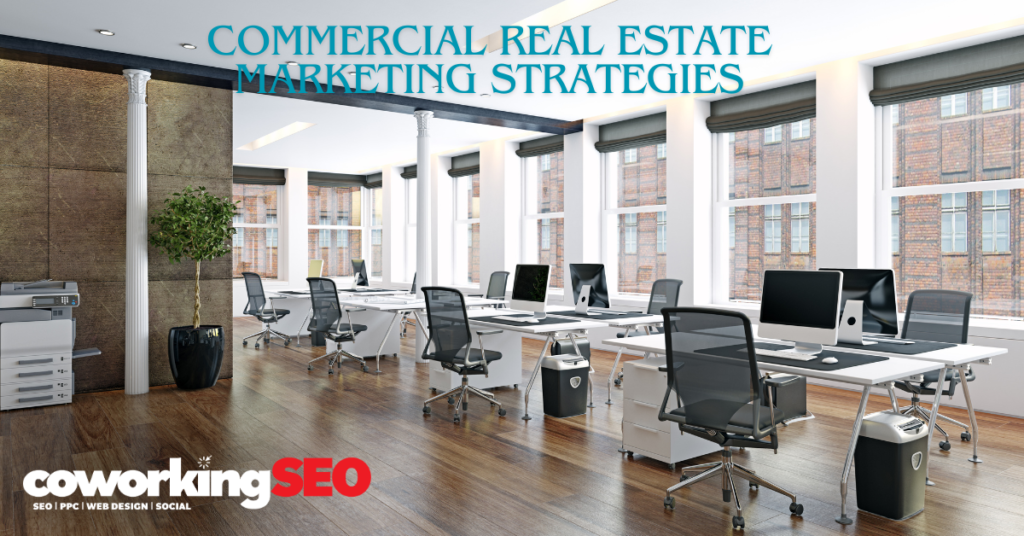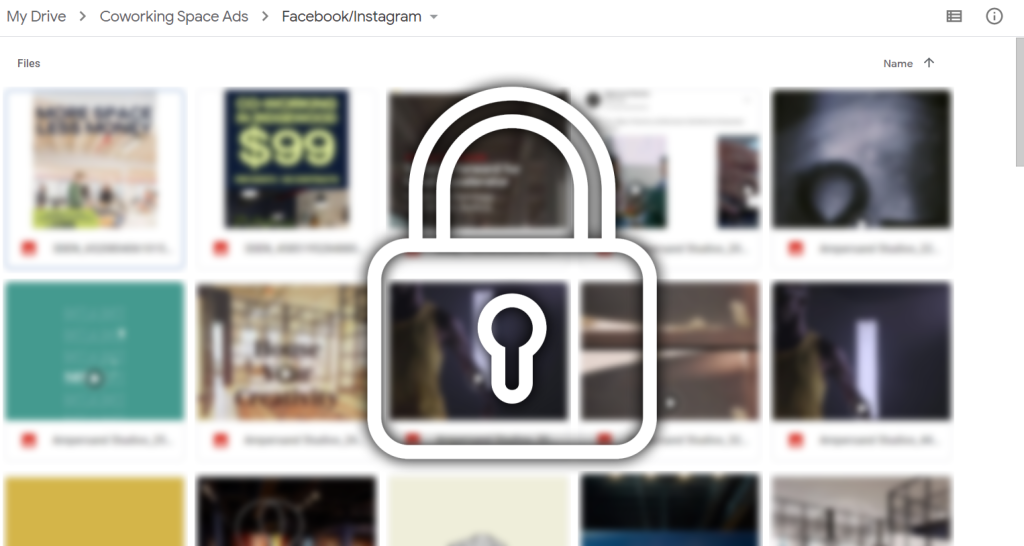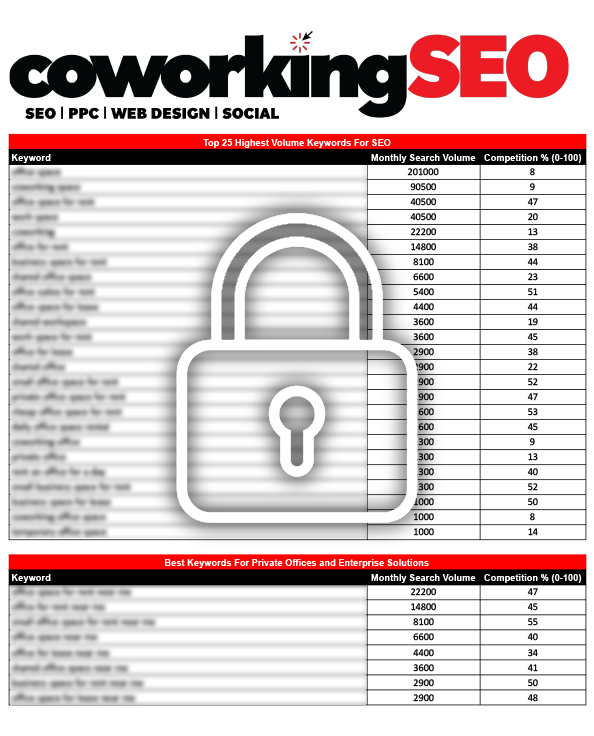Marketing Tactics for Commercial Real Estate
In the last few years, real estate has changed dramatically. You need to have a new marketing strategy. We’ll break down the changes and how you can adapt your marketing to capitalize on this shift.
What Has Changed Since the Last Time You Visited?
In the last few years, a changing professional lifestyle has led to a fundamental change in Commercial Real Estate. This includes everything from the way tenants search for properties to the requirements they have for the space they rent. Consider these changes when marketing your commercial properties.
Tenants Are Starting Their Search for a New Home Online.
Tenants used to be willing to walk from one space to another and see what they had. Most brokers didn’t offer remote tours because the technology was too limited to deliver an enjoyable experience. Now that the technology has become more widely available, tenants are taking advantage of it. You have to begin the search with virtual tours and videos, then continue with in-person visits.
Tenants Are Looking for a Lifestyle and Not Just an Apartment.
Locations and floor plans are no longer as important in a world of remote work, where the office has to compete against the comforts at home. Automation and amenities have become more important. Effective marketing should do more than just highlight square footage. It should show a simplified workplace lifestyle to entice employees off of their couches and into the office.
Tenants Are Looking For a Way to Share the Decision-Making.
In the past, the CFO or head of realty handled the search for new spaces. With the focus shifting to employee satisfaction and productivity, leadership at companies is now bringing in more employees and managers to assist with real estate decisions. He explained that the people in charge of culture and values are coming to evaluate whether the building and not just the physical space reflects the company’s values. Will it be enough to encourage our employees to spend time here 3 to 4 days a week?
What Does It Mean for Your Marketing Strategy?

The shift from property-centered to worker-centered decisions in leasing requires a change in marketing strategy. When you develop your marketing strategy for commercial real estate, make sure to compensate for this shift.
Make Sure You Are Known for What You Offer.
Listings used to be based on square footage. Now they must include more. Concentrate on educating clients about your property’s convenience and amenities, particularly the less obvious ones, such as integrated tenant technology. Features that encourage employees to leave their homes for the office should be highlighted.
Confidence in Your Product or Process Is Key.
A high-quality, user-friendly website allows clients to involve all key decision-makers in the leasing process. This makes it easier and more efficient. It will also make a good first impression and encourage them to continue working with you after the lease has been signed. Remember that the best commercial real estate marketing strategies are as much about retaining existing tenants as they about generating new ones.
How Can I Achieve These Marketing Goals and Objectives?
Let’s discuss tactics now that you understand the market and your goals. Here are the building blocks for a successful marketing strategy in commercial real estate today.
Identify Your Value Proposition.
It’s important to know what makes you (or your property) stand out from your competitors. This will help you to determine the best channels to use for your message and to reach potential customers. You may have a property that caters to a specific market or you might offer tenant services your competitors do not. You can use marketing to showcase your strengths and make yourself stand out by studying your competitors.
Determine Your Audience(s)
Your target audience will also determine what type of messages you use, and where. Do your spaces suit more entrepreneurial startups, or are they better suited for larger companies with more experience? Look at the commonalities between your tenants. You can increase the return on investment by focusing your marketing on your target demographic.
Create (Or Embrace Your Brand Identity)
Marketing is more than eye-catching advertisements. Marketing campaigns that are effective establish the personality of a brand as if they were people. Is your brand relaxed and friendly? Is your brand chic and mysterious or friendly? Make sure that your marketing matches the personality of your brand. Consider creating unique identities for your properties if you have a large portfolio to better market to tenants and investors.
Determine the Most Effective Channels.
This step is based on knowing your brand identity, target audience and value proposition. If you are targeting entrepreneurs, you might want to share content using social media trends. Press releases may be more efficient if you are aiming at more established companies. Spend your time and money on marketing channels where you know your ideal tenants are.
Set Specific and Measurable Goals.
Use tools like a data-abc=”true” href=”https://analytics.google.com/analytics/web/provision/#/provision”>Google Analytics/a> or the built-in analytics to track what’s working and what isn’t. Use Google Analytics, or the analytics built into website tools to see what works and what doesn’t. You can set more specific goals like a date by which you want to have a property leased or a limit on the number of vacancies.
Set a Budget but Remain Flexible.
It can be difficult to predict the return on investment when setting a budget for marketing. It’s fine to wait and see, as marketing is a game that takes time. Keep some cash aside when crunching numbers so that you can pivot if you find out which strategies work. Increase the capital invested in successful campaigns to maintain momentum.
Create Your Marketing Materials
Most people associate marketing with digital ads or catchy slogans. But these materials are only created after the foundation is laid. The marketing materials you use should be designed in a way to inform and entice tenants, but also in a cohesive, coordinated manner that will build tenant confidence in your brand. By laying the foundation of steps 1 to 6, you can avoid wasting time and money on ineffective materials. Below is a list with the types of materials that you may want to use.
Make Sure Everyone Is on the Same Page.
Cohesiveness is essential for delivering quality service to your customers, from the person who answers the phone to the one closing the deal. A comprehensive digital platform, such as Coworking SEO, is essential to ensure that all parties involved in leasing have access to your brand identity, messages, and inventory. It creates an experience that is consistent and streamlined for your customers.

How Does Commercial Real Estate Advertising Look Today?
There are countless commercial real estate marketing strategies, but to stay competitive, you need these marketing tools.
- A website of high quality: At the very least, your site must include listings, a testimonials section, and contact details. Spend the extra money and time to optimize your website for search engines.
- Professional Photography: Top-notch photography is essential. A (quality) image is worth more than a thousand words in digital real estate marketing.
- Professional Video: Create advertisements that highlight the lifestyle offered by your properties — drone footage is an excellent touch. Videos with CRE professionals and testimonials of satisfied clients can also be valuable assets for your site.
- Virtual Tours: Hire videographers or create 3-D renderings for a virtual tour to help tenants get a feel for the space.
- Interactive Floor Plans: Investors and tenants will find it convenient to have access to floor plans that are interactive when communicating with their team.
- Social Media Presence: Visual media such as Instagram are great for keeping your property on the radar of people, while LinkedIn allows you to establish yourself as a thought leader in your industry.
- Blog: Offering valuable information to clients, such as industry news or local market reports, establishes credibility and keeps your website current. It also boosts your reputation.
- Signage: This is old-school, but it still works. Make sure your properties are clearly marked with a brand name and clear signage. This will help tenants find you.
If you are able to determine your target audience and your message, you can use any of the following strategies in your commercial real estate advertising strategy.
- Tour Books: A tour book that contains relevant information about the property helps tenants make informed decisions and makes you appear prepared. Coworking SEO provides tools for both virtual and physical tour books.
- Direct Mail: Again it is old-school, but if you target the right audience with your distribution list, it will work.
- Brochures: are a great way to keep your printed media up-to-date without having to constantly update them. You can update your brochures without messing with your website.
- Email Campaign: By sending out newsletters that contain valuable industry information, you keep your company at the forefront of your clients’ minds. Email marketing should have a short, sweet message with a clear action. Constant contact can be a great option.
- Press Releases: Potential clients will instantly trust you when they see your name in a local newspaper, magazine or website. It’s also a great way to get exposure, and it’s completely free!
- Networking Events: Attending and hosting conferences, webinars, and other networking events can help you generate leads.
- microsites: microsites can be especially useful if you own a large portfolio of commercial properties. You can create different brands for each property in order to attract your ideal tenants.
- Guest Posts: Like press releases, guest posts on prominent industry blogs or websites offer you exposure, backlinks and street cred.
- Informationgraphics: Not only are infographics eye-catching but they also offer value to social media followers and mark you as a professional in the industry. Check out Infographics World (IGW), to find services.
- Remarketing: Display your ads to Google users after they search for certain keywords with Google Advertising.
- Volunteering: or sponsoring a charity is a great way to promote yourself in a positive manner. You can also enjoy the benefits that come with a stronger community.
- Google Business profile: A Google Business profile allows clients to engage, analyze reach and manage what they see when searching for your business.
Last Words of Advice
It can be tempting, but less is more. You should use relevant data when selecting a few marketing tools, rather than using them all without a clear goal. Digital marketing tools Coworking CRM Software such as Flex Engine will help you gain the insights that you need while automating and streamlining your marketing efforts. You’ll be able to reach more tenants and investors by using digital marketing tools.
Want to learn more about Coworking SEO? Contact us today and we’ll boost your coworking spaces in the digital world of SEO and Digital Marketing!


